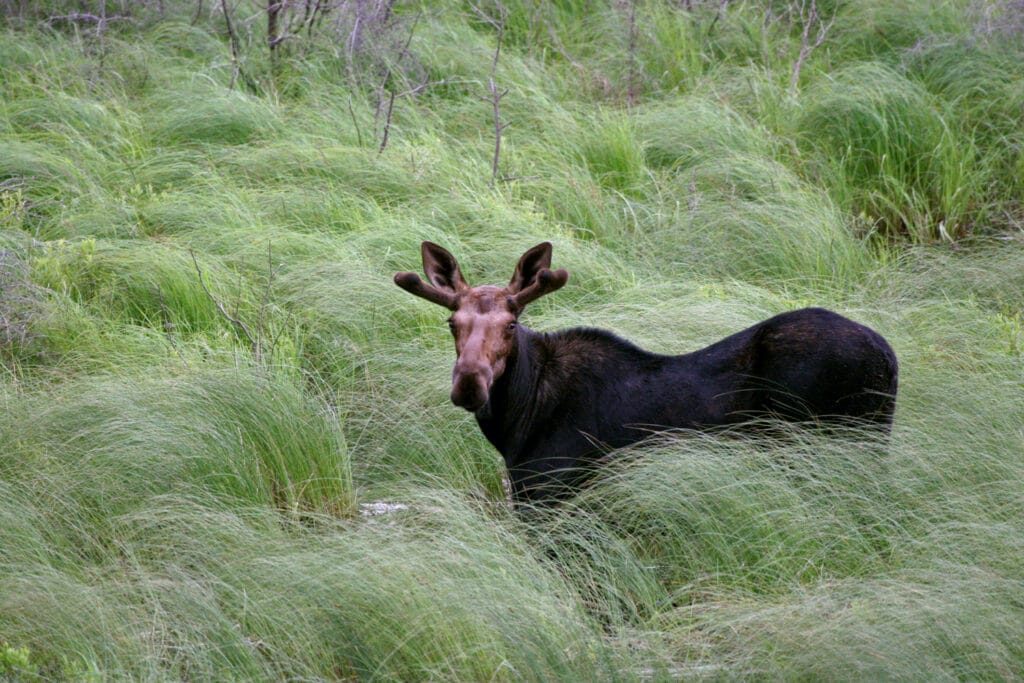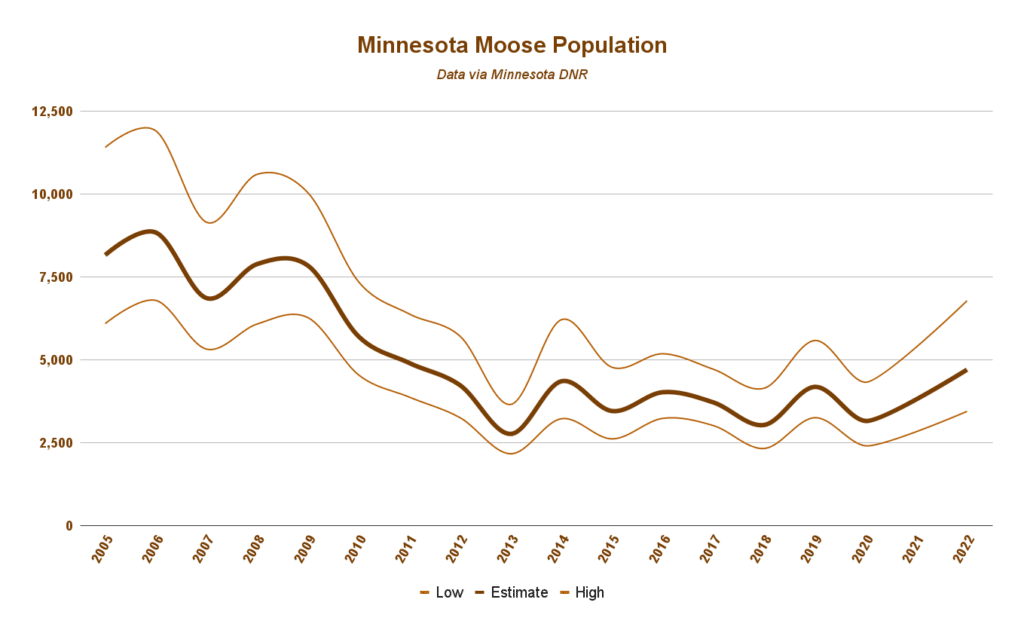
State officials sounded cautiously optimistic this week when they released the latest count of moose living in northeastern Minnesota. The annual survey found the population statistically flat from the previous few years, but signs of reproduction were evident.
The 4,700 estimated Minnesota moose population was within the range of previous estimates, but the highest actual estimate in more than 10 years. There was also the highest percentage of moose cows with calves observed since the population began a rapid decline in 2006.
Today, the state’s moose numbers are about half of what they were in 2005. Researchers point to a variety of causes, including parasites, white-tailed deer, climate change, wolves, forest management, and more. Breeding success and calf survival has been identified as a key contributor to the health of the population.
The survey was conducted by flying in helicopters over 53 designated plots 14-square-mile plots across the 6,000-square-mile region, and counting the numbers of moose observed from the air. The plots are a sample of 436 survey plots that are randomly chosen from each year. The surveyors fly over each plot eight times on parallel courses, usually spending about 45 minutes searching each plot.

The data is analyzed to provide an estimate of the entire population, taking into account conditions, habitat, and other factors. This year, the surveys were conducted over eight days in early January. The survey was not conducted last winter due to COVID-19, the first gap in the population since the survey protocol was adopted in 2005.
Survey data
“This year 373 moose were observed on 40 (75%) of the 53 plots surveyed (a total 737 mi2),
which is more than the 308 moose observed on 39 of 52 plots during the 2020 survey,” report authors Glenn DelGiudice and John Giudice wrote. “An average of 9.3 moose (range = 1–33) were observed per “occupied” plot. Plot occupancy during the past 16 years when the survey was flown averaged 81% (range = 65–95%) with a mean 11.4 moose observed per occupied plot.”
The biologists point out that the overall estimate is 47 percent lower than the moose population’s peak in 2006, while it was 64 percent lower during the last survey in 2020. But they also say they don’t make any predictions about the future population based on the data, and the population decline remains significant.
Forest habitat after fire
To help monitor the habitat and wildlife response to the Greenwood Fire, which burned about 26,000 acres of the Superior National Forest near Isabella last summer, the survey crews added a new plot in the fire area. This will help monitor how the moose population might change as the forest grows back.
“It’s an encouraging result, but I think it’s too early to break out the champagne,” Mike Schrage, a wildlife biologist for the Fond du Lac Band and a member of the survey team, told the Duluth News Tribune. “We need a couple more years with results trending in the same upward direction before I start feeling confident we’re experiencing a genuine recovery in moose numbers.”
The Fond du Lac Band of Lake Superior Chippewa and the 1854 Treaty Authority contributed funding and personnel for the 2022 annual survey.
More information:
- DNR researchers optimistic about moose population wellbeing, immediate future – MN DNR
- Northeastern Minnesota’s moose population hanging on – Duluth News Tribune

